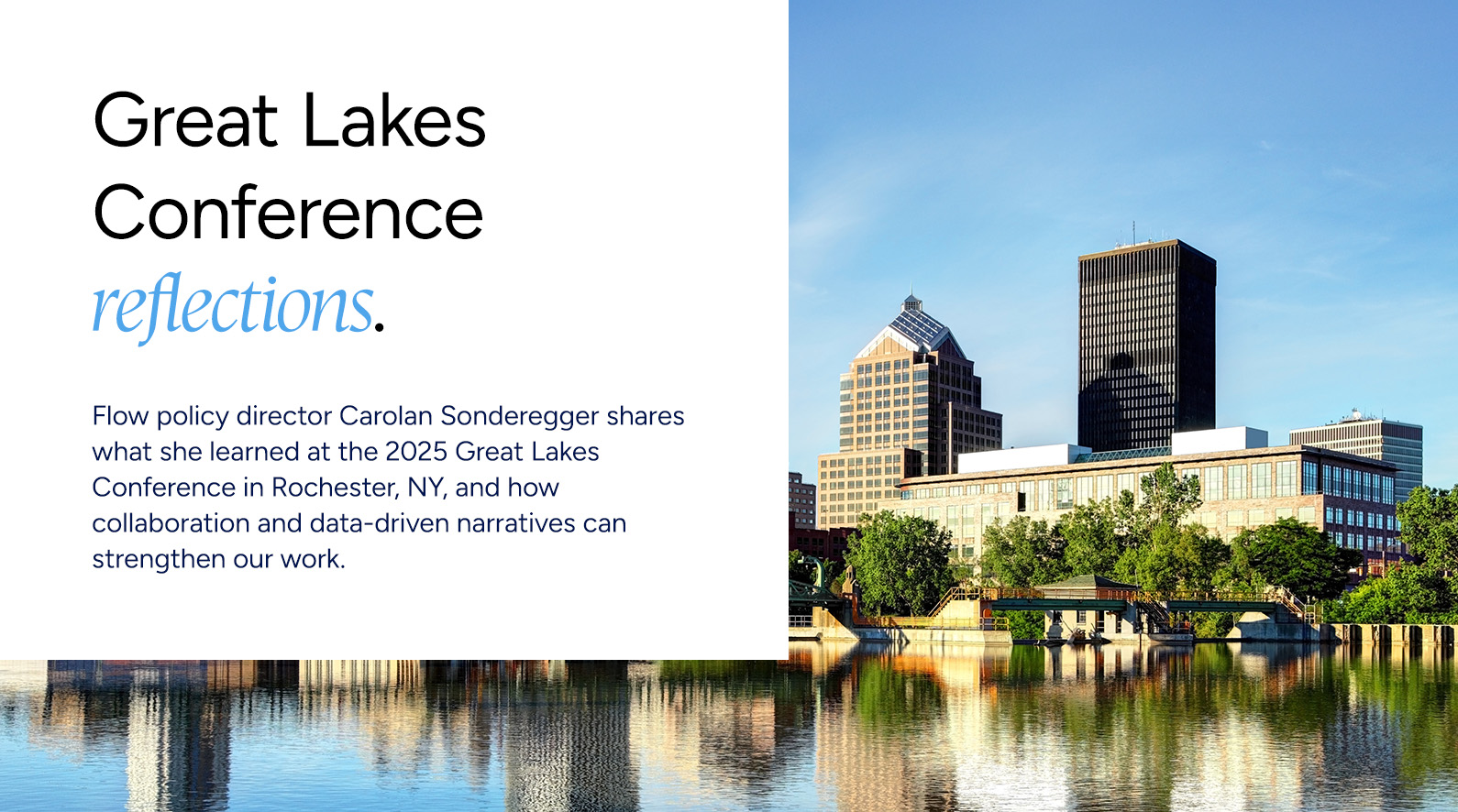
Carolan Sonderegger, Policy Director
I attended the 2025 Great Lakes Conference expecting good content, but what stood out most wasn’t any single presentation or data point—it was the high level of collaboration happening across the region. Whether it was researchers, tribal leaders, farmers, nonprofit practitioners, or municipal officials, everyone was focused on the same core idea: we keep the Great Lakes clean by working together.
Collaboration as a practical tool.
Every session I attended reinforced that relationships are just as important as research or policy frameworks. The teams behind projects like Genesee RiverWatch and Rochester Ecology Partners showed how environmental work lands better when people are directly connected to their local water—through community science, internships, paddling trips, or even school garden programs.
The breakout on regional collaboration for funding made the message especially clear:
Step one is not writing the grant. Step one is finding the people who will write it with you.
Programs across Wisconsin, Michigan, and Ohio shared examples of watershed coalitions that succeeded not by having perfect plans, but by staying in the room together, even when priorities differed. Humility, persistence, and regular communication were highlighted more often than technical tools or models.
Combining narrative and data to drive policy change.
Several sessions also emphasized that data alone doesn’t drive policy—but data paired with real stories can.
- In Wisconsin’s “Nitrates on Tap” session, private well owners shared the financial burden of contaminated water ($3,000–$75,000 per well), making nitrate pollution an economic justice issue, not just an environmental one.
- The Tonawanda Seneca Nation presented their work on a Rights of Nature bill in New York (A5156), which would allow legal representation on behalf of rivers and lakes—a tangible example of how Indigenous leadership is reshaping policy frameworks.
- The H2Ohio Program showcased how bipartisan advocacy, flexible funding tools, and coalition-building helped move nutrient reduction efforts from pilot projects to statewide initiatives.
Key takeaways.
Across topics—nutrient management, stormwater, agricultural conservation, microplastics, youth education—the most consistent theme was simple: Solutions already exist. Scaling them depends on coordination.
As I return to my own work, I’m less focused on “finding the perfect strategy” and more focused on staying connected to the people who are working toward the same outcomes. If the Great Lakes are going to be healthy, public, and protected, it won’t be because one organization figured it all out. It will be because many of us kept showing up and building together.
